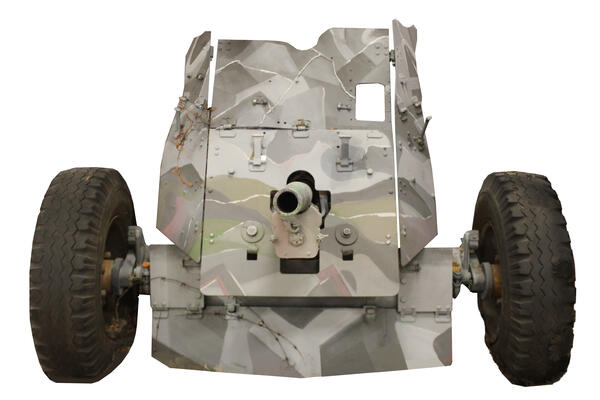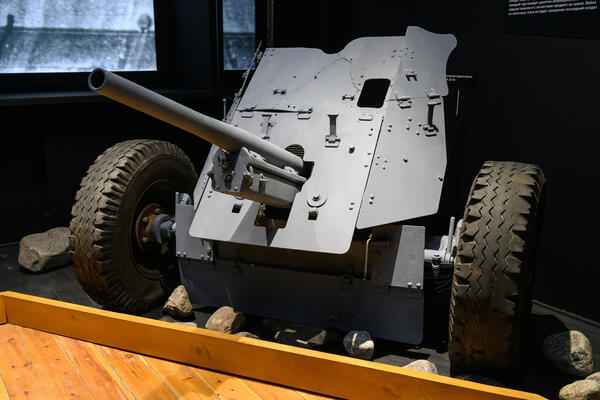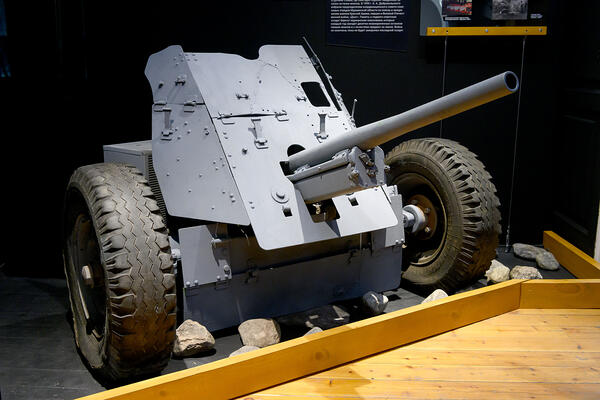The exhibition of the Polyarny Museum of History and Local Lore presents the German mountain gun Pak 35/36, found at the battlefields in the area of the Zapadnaya Litsa River, where the defense line passed by the participants of the “Pamyat” (Memory) search party.
The Pak 35/36 was the main gun of the Wehrmacht anti-tank units during the initial period of World War II. It was adopted by the German army in 1934. These guns were issued to anti-tank companies of infantry regiments and tank destroyer battalions in infantry divisions. They were also used to destroy the enemy’s manpower and firing points. In the Wehrmacht, due to its inadequate penetration capability, it was informally known as the “door-knocking device”. The Germans first tested this weapon during the Spanish Civil War. The use of such a gun against the light tanks of the Republican forces was very successful, which only prompted many countries to develop new tanks with heavier armor.
The Pak 35/36 anti-tank gun had a rather innovative design for its time. The gun had a light two-wheeled carriage with a split trail and metal wheels with rubber tires on leaf springs. It had a hydraulic rollback brake, a spring-loaded hydro-pneumatic recoil system and a wedge horizontal shutter with an automatic closing mechanism. The latter allowed for an increased rate of fire. It was rather light — no more than 440 kg in the marching position — and could be transported by a variety of vehicles, even fairly light cars, or by the gun’s crew. In the Arctic this was particularly important, as during the Second World War there were practically no roads and the gun was mostly carried through mountainous terrain.
The disadvantages of the gun
can be attributed to the poor penetrating capabilities of light shells — oftentimes
several armor-piercing hits were required to disable a tank. Tanks hit by this
gun could most often be repaired. These guns were quite successful against Soviet tanks like the
1930s-model BT and T-26, which formed the basis of the Soviet armored forces in
those years. It did even better against light tanks such as the T-37A, T-38 and
T-40. The effectiveness of the Pak 35/36 against T-34 tanks is still a subject
for debate.





